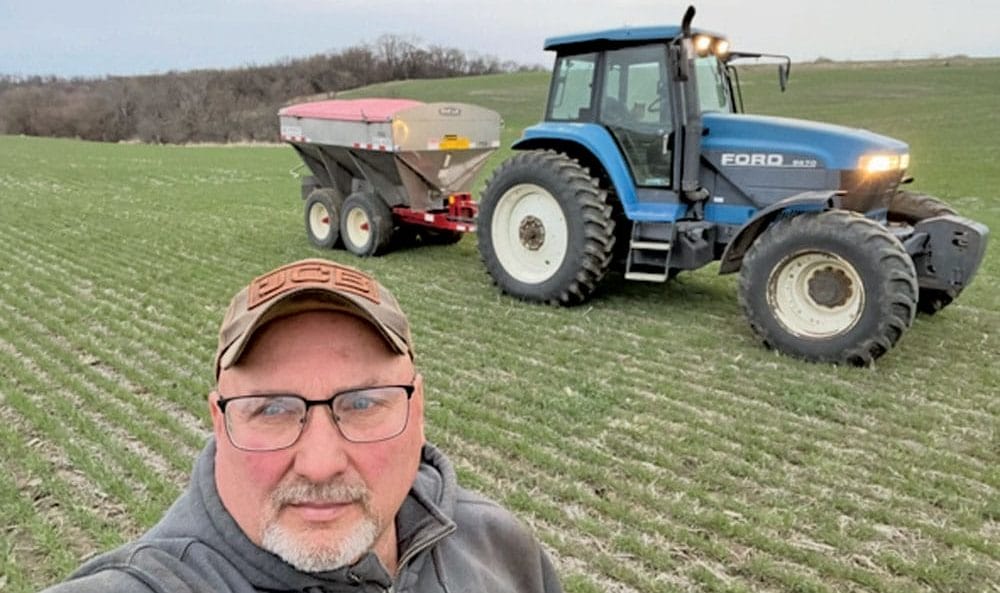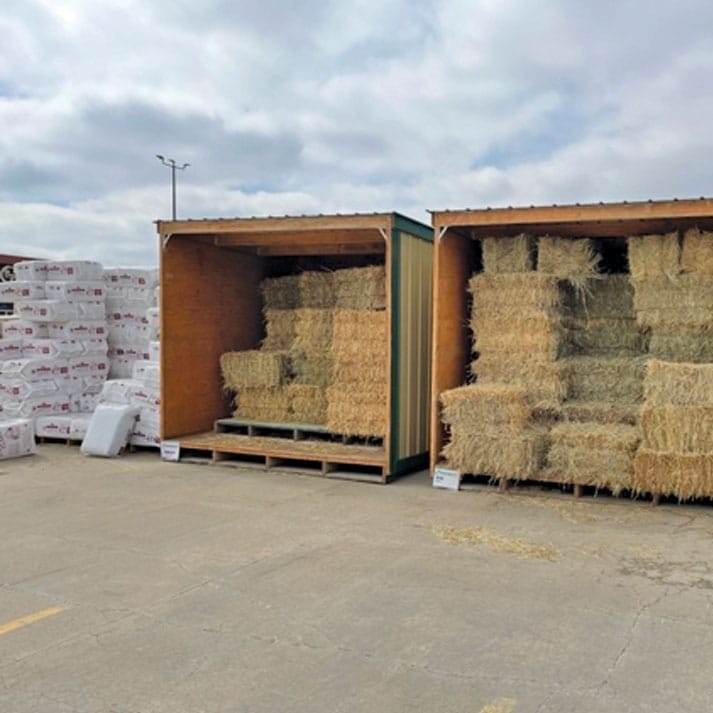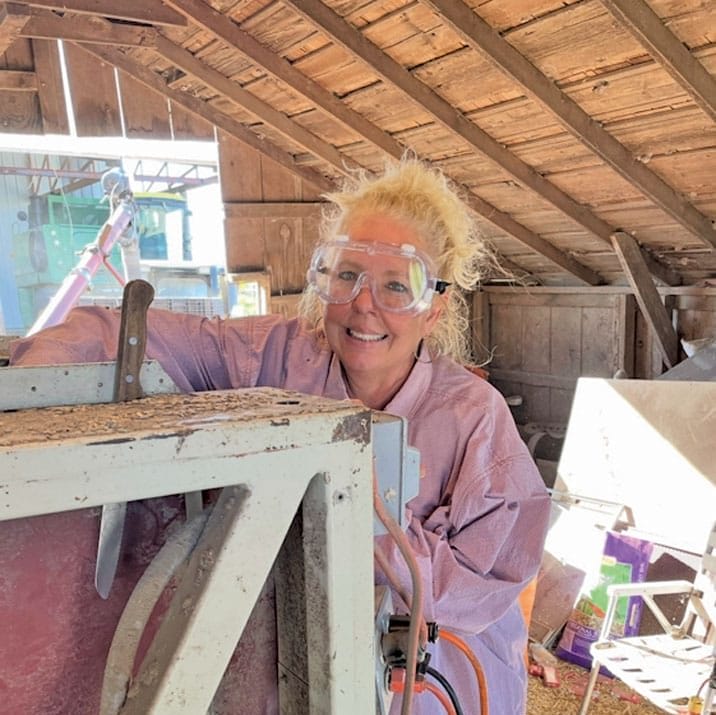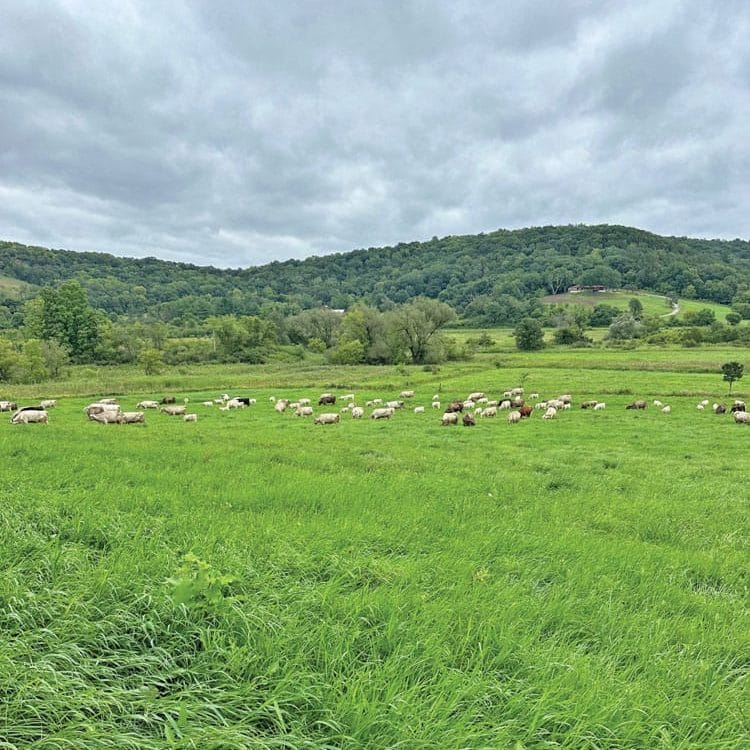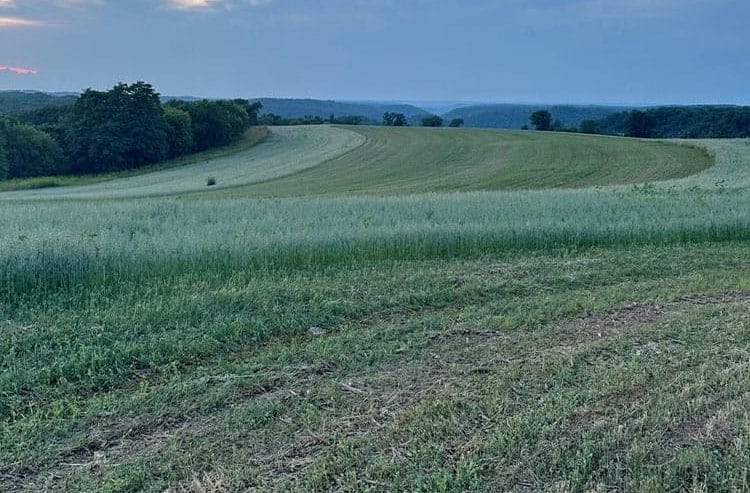Small Grain Successes
Small-grain producers use creativity and relationships to establish markets and build resilience.
When Tom Cumming’s neighbor asked him to combine his rye for a large share of the seed and straw 12 years ago, Tom had no clue what he was getting himself into. As a row crop farmer since 1985, he had gotten very used to his rotation of corn, soybeans and hay. But after helping his neighbor, Tom decided to use the rye seed he had harvested to start growing his own rye – and to bale the straw so he could make the most of the crop.
Marketing straw was tricky. When Tom couldn’t find local farmers to sell to near his Redfield, Iowa, farm, he reached out to local businesses. He was turned down repeatedly for months. Fortunately, Tom had time and space to brainstorm. “When you spend many hours in a tractor with no radio, you have a lot of time to think,” he says. “That can be good if you’re creative and bad if you’re stewing on something.”
Tom is the creative type, so when he persevered and dropped by one more Tractor Supply store to try to sell his straw, he had a plan. To show his investment in the market relationship, Tom offered to supply an 8-by-10-foot open-front building to house his straw in front of the store. A pallet of 60 bales could be set inside using a forklift, a far easier task than manually moving bales into the store’s main storage sheds.
After seeing Tom’s straw, the store manager was sold on the marketing idea and connected Tom to other Tractor Supply stores in the area. When the manager transferred to a managerial role at Bomgaars, he called Tom to see if he would add Bomgaar stores to his market network.
“Just stopping in that one time and meeting the right guy who had the need helped me scale up to 40,000 bales a year in just about six or seven years,” Tom says.
As sales grew, bookkeeping became trickier to manage. Tom’s wife Robin quit her job and jumped in to manage invoicing, taxes and other office work while also spending long hours cleaning rye seed in late summer. Today, Tom and Robin sell square rye straw bales at more than two dozen stores across west and central Iowa through their business, TRC Farms. They house the bales in two to four small buildings outside each store. While they don’t receive rent for the structures, sales are good enough that each building is paid off.
Making Connections
Though creativity was the spark for the Cummings’ market success, relationships fueled the fire. Many miles to the east, a very different small-grain operation also relies on personal connections.
Andy Hazzard grew up on a row crop farm near Pecatonica, Illinois, and raised animals for 4-H. In 2007, she decided to start Hazzard Free Farm, a vegetable CSA farm. But through the first few years, she always had a feeling that grains were what she really wanted to grow. “The vegetables were just kind of a way to get started,” she says. “When the door opened for grain, I thought, ‘Let’s see if we can make this go!’”
In 2012, Hazzard Free Farm Grains was born when Andy bought a mill and started growing oats, wheat and corn. After two hectic years running her vegetable and grain farms as fully separate operations, she chose to focus solely on grains. Andy had already built many local relationships through her CSA, which gave her a head start finding markets for her grains. “I was already in the restaurants dropping off produce, so I would drop off samples of the grain and say, ‘Hey, I’m trying this out. What do you think?’”
Her drive to connect has kept her products on the shelves in local stores and on ingredient lists in restaurants. She has also found creative ways to market her grains. One grain buyer, a local baker, drops off bread and scones made from Andy’s flour when coming to pick up more flour from the farm.
Andy says making these connections energizes her.
“The more I talk to people, I find that they really want to get their hands back into nature in a different way,” she says. “That connection with food offers a whole space where we can hold a hand out and say, ‘Come and see. Come and experience it.’”
Building Resilience With Livestock
Even with innovative ideas and a supportive network, things often don’t go as planned on a farm. For Andy, because her products are used in table food, she must be careful at each processing step to meet food-grade requirements. She cleans her grain using a gravity table before sending the grain to be tested. She’s also careful to ensure the grain dries thoroughly before selling.
Yet challenges still arise. “One time, there was a series of events that led to the combine picking up clods of dirt on some purple barley. I cleaned it probably four times, but I couldn’t get the toxin dust out,” Andy says. “That was so sad because the crop was beautiful.” The toxin Andy refers to is vomitoxin, a substance made by a type of fungus that can contaminate grains like corn, wheat and barley. Guidelines for food-grade grains limit vomitoxin levels to 1 part per million or less. But Andy has learned she can feed tainted grain to livestock, as long as vomitoxin levels are under 5 ppm.
Near Spring Green, Wisconsin, Michael Dolan of Seven Seeds Organic Farm has also learned the value of raising both grains and livestock. Michael and his family focus mainly on raising 100% grass-fed cattle and marketing their beef. They first started growing small grains as feed for their cattle. As they transitioned to grass-fed, they decided to grow high-value food-grade grains.
Michael had already formed a relationship with neighboring farmer Paul Bickford. As Paul transitioned farm ownership to John and Halee Wepking, Michael formed a market relationship with them for his grains. Today, the Wepkings mill a variety of grains from their own farm and neighboring farms, including Seven Seeds. They also keep grass-fed beef cattle, which they sell to the Dolans at 18 months old.
“They have more connections and knowledge about marketing grain than we do, and we have more connections and marketing experience to market beef than they do,” Michael says. “So we have a pretty symbiotic relationship.”
When grain doesn’t meet food-grade standards, Michael can feed grain to his pigs and chickens. He’s also willing to find another buyer in need of animal feed, even though it sells for a lot less. His wheat, for instance, can sell for $15 to $20 per bushel if it meets food-grade requirements. “But if it doesn’t,” Michael says, “it’s more like $5 to $6 per bushel. It can be a huge financial swing.” But having a foundation of pre-established relationships alleviates some of the stress when forced to shift gears.
Cultivating Respect
For Michael, Andy and the Cummings, small grains have been key to cultivating resilience on their farms. Beyond the physical crops, each has made a concerted effort to form strong connections in their community, building trust through reliability, hard work and a bit of flexibility.
“One relationship really can change everything,” Robin says. “But it was Tom’s personality – his willingness to work hard and get the product to the store in a timely manner – that the manager really liked.”
Michael asserts that communication is key.
“Reach out to your customers and receive feedback whether it’s negative or positive. If it’s negative, make adjustments. See what you can do.”
With some ingenuity, networking, patience and a back-up plan, small grains may well lead to large gains.

